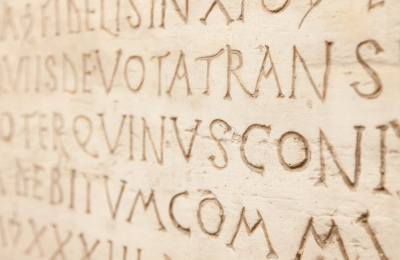Ancient Rome was considered unique and one of the most prominent powers in History. As imagined, it was home to numerous groups of people from diverse backgrounds, cultures, and religious beliefs.
As a result, there were many differences in the languages people spoke and modes of communication. Though there were many other types of languages spoken as the mother tongue in ancient Rome, the two most common and widely accepted languages among the Romans were Latin and Greek.
The Roman empire was built and developed on these two most significant languages. Hence, almost all the Romans at that time could understand and communicate in one or both languages. However, regional languages were also spoken. For example, languages that were specific to each tribe and locality.
Nevertheless, Latin and Greek were the main languages that got to be the center of activities in ancient Rome. Most citizens traveling to and from Rome had to learn either of the languages to communicate.
As the power and empire of ancient Rome grew and spread to other Mediterranean areas, these languages also spread.
However, to fully understand the importance and the role these languages played in ancient Rome as far back as 753 BC, it is paramount to consider the historical facts of these languages.

The Latin language in ancient Rome
Latin was the first official language spoken in Rome. The language was referred to as “Lingua Franca” since it was adopted as a common language in place of the several languages spoken by people.
In essence, Latin brought the Romans together and promoted a common identity.
Citizens principally spoke it in administration, law, politics, military, and legislation since these were the major occupations involving communication with people outside Rome.
The Latin language started gaining roots and recognition in Rome (Named after the founder, Romulus, around 700 BC) over a millennium ago. However, to be more specific, it was only after the early 7th century that the language became official in Rome.
The Latin language was divided into three forms, depending on the age it existed and was used, considering the difference in syllabic words, grammar, and language stresses. The distinct forms were — Old/extinct Latin, classical Latin, and Vulgar Latin.
The old and extinct Latin language originated around the 7th century and is regarded as one of the oldest and classical languages that have survived until today. Classical Latin erupted a few years after the old Latin was in use. The Romans used classical written Latin, Oratorical, and ordinally colloquial Latin during the classical periods.
On the other hand, Vulgar Latin was the most used among the Romans since most texts back then were written using the vulgar style. The third form of the Latin language was named vulgar, not in terms of rudeness, but in terms of the number of people comfortable using that language.
The Greek language in ancient Rome.
Despite the Latin language’s influence on most parts of ancient Rome, some parts remained neutral and chose to stick with their regional language. However, the eastern Mediterranean adopted the Greek language because of Alexander the Great’s conquests. In this part of Rome, Latin was less common.
Like Latin, the Greek language was chosen for communication and diplomatic purposes. In essence, the language was introduced to serve as a common ground between officials in and out of the Roman empire.
With Greek as a second official language, the boundaries of the Roman empire grew.
Religious bishops and leaders used the language in Christianity. The language was also incorporated into the New Testament, further enhancing many people’s interest.
At some point, after seeing the massive influence and the roots of Greek that were beginning to overgrow in Rome, Emperor Claudius tried to curb the use of Greek by revoking the citizenship of Romans who could not communicate in Latin.
However, instead of depreciating, the language became more popular as the language of the eastern Roman empire and further gave rise to Medieval greek, later known as modern greek.
Nevertheless, many misconceptions arose as to which of the languages was dominant. Latin was considered the supposed language used among the wealthy class, while Greek was for enslaved people. However, despite several attempts, the greek language flourished and was spoken and used in plays and speeches.
Minor languages in ancient Rome
Greek and Latin were common as Rome’s official languages, but other languages were labeled regional. In other words, these languages were specific to some regions and had boundaries. Some languages include Aramaic and Syriac (common to Syria and the Mesopotamia regions), the Oscan language, Coptic, and Punic.
These languages were limited in their use and spread because they were associated with a particular region.
Hence, they were not widespread as the Latin and Greek languages. Either Greek or Latin, at some point, replaced a meaningful percentage of the languages.
The language spoken in ancient Rome was as diverse, influential, and prominent as the empire itself — so much for the great Roman empire.

